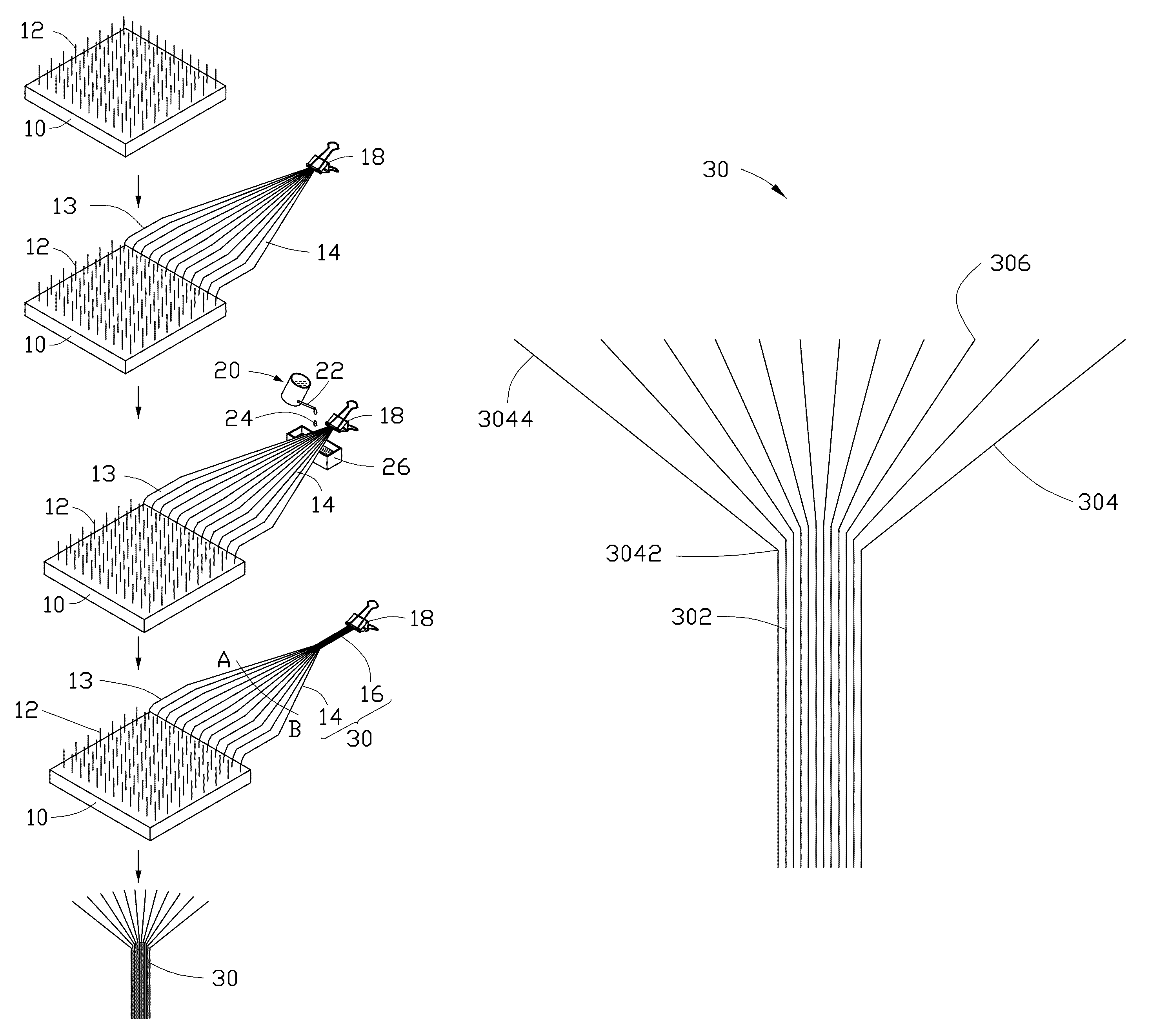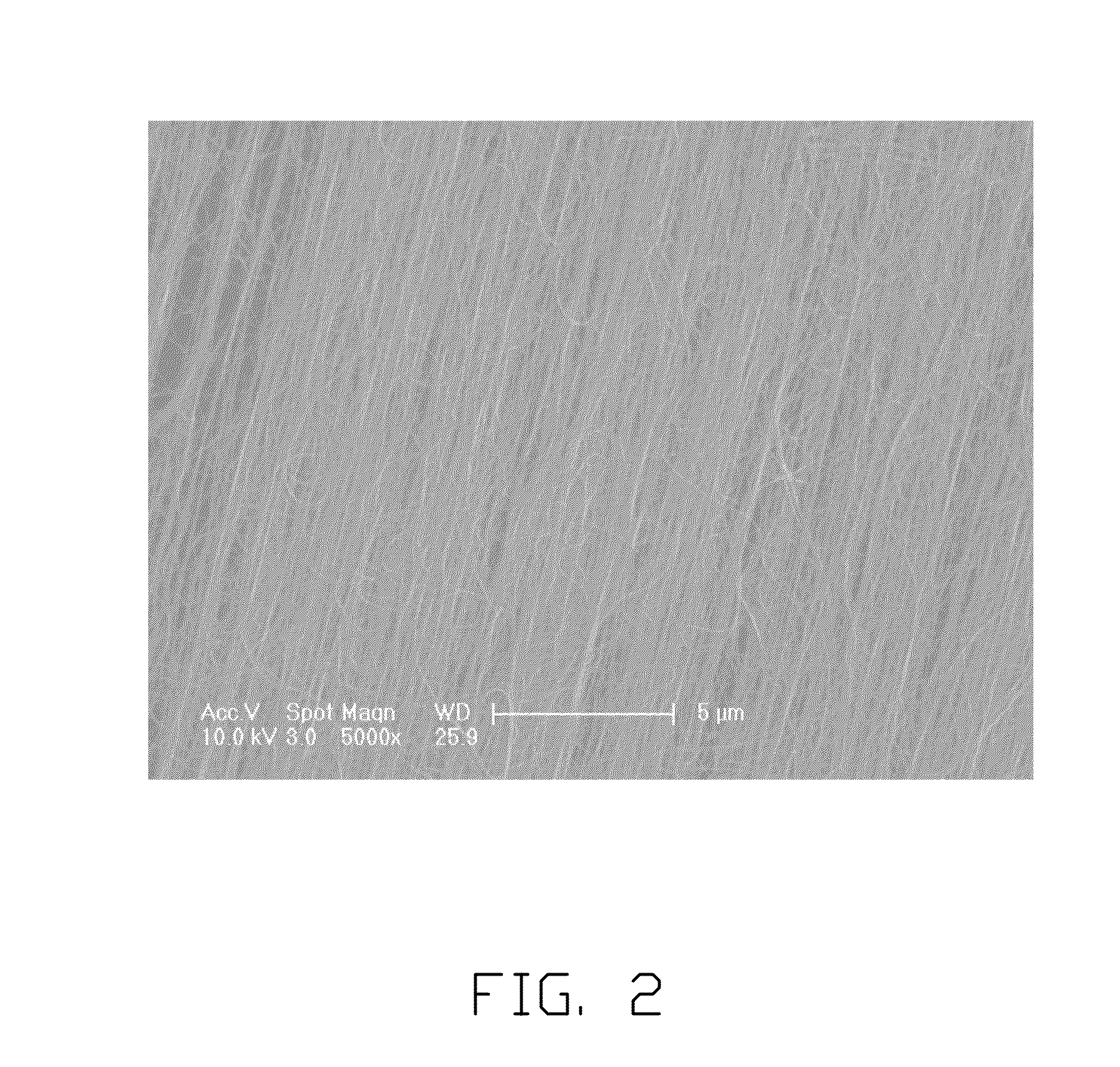Method for making carbon nanotube field emitter
a carbon nanotube and emitter technology, applied in the manufacture of electric discharge tubes/lamps, discharge tube main electrodes, and electronic systems, etc., can solve the problems of increasing the emission voltage, damage to the emission tip of the field emitter, and further damage to the entire field emitter
- Summary
- Abstract
- Description
- Claims
- Application Information
AI Technical Summary
Benefits of technology
Problems solved by technology
Method used
Image
Examples
first embodiment
[0024]Referring to FIG. 1, a method for making a carbon nanotube field emitter 30 of the first embodiment includes following steps:
[0025]S1, providing a carbon nanotube array 12 located on a surface of a substrate 10;
[0026]S2, selecting some carbon nanotube segments of the carbon nanotube array 12 and pulling out a carbon nanotube film from the carbon nanotube array 12 by a drawing tool 18, wherein the carbon nanotube film includes a triangle region 14;
[0027]S3, treating a portion of the carbon nanotube film with an organic solvent 24 to form a carbon nanotube wire 16, wherein the carbon nanotube wire 16 includes a vertex of the triangle region 14;
[0028]S4, cutting off the triangle region 14 from the carbon nanotube film by a laser beam along a cutting line AB, wherein a distance between the vertex of the triangle region 14 and the cutting line AB can be in a range from about 10 microns to about 5 millimeters, to obtain a fan-shaped or triangular carbon nanotube field emitter 30.
[00...
second embodiment
[0057]While rotating the drawing tool 18, a pulling force is still applied on the carbon nanotube film, and the plurality of carbon nanotube segments is twisted. Further, by pulling the drawing tool 18, more and more carbon nanotubes can be drawn from the carbon nanotube array 12 to extend the length of the carbon nanotube film. In the second embodiment, the value of twist force is in a range from about 0.00005 Newton to about 0.001 Newton.
[0058]Referring to FIG. 5, it is to be understood, the carbon nanotube film can be separated from the carbon nanotube array 12. In the length direction, one end of the carbon nanotube film is supported by the support cylinder 15, and the other end is held by the drawing tool 18. The support cylinder 15 and the drawing tool 18 are simultaneously twisted along two reverse directions, to twist the portion of the carbon nanotube film into the carbon nanotube wire 16.
[0059]It is to be understood, the carbon nanotube wire 16 formed by twisting the porti...
PUM
| Property | Measurement | Unit |
|---|---|---|
| distance | aaaaa | aaaaa |
| twist force | aaaaa | aaaaa |
| distance | aaaaa | aaaaa |
Abstract
Description
Claims
Application Information
 Login to View More
Login to View More - R&D
- Intellectual Property
- Life Sciences
- Materials
- Tech Scout
- Unparalleled Data Quality
- Higher Quality Content
- 60% Fewer Hallucinations
Browse by: Latest US Patents, China's latest patents, Technical Efficacy Thesaurus, Application Domain, Technology Topic, Popular Technical Reports.
© 2025 PatSnap. All rights reserved.Legal|Privacy policy|Modern Slavery Act Transparency Statement|Sitemap|About US| Contact US: help@patsnap.com



